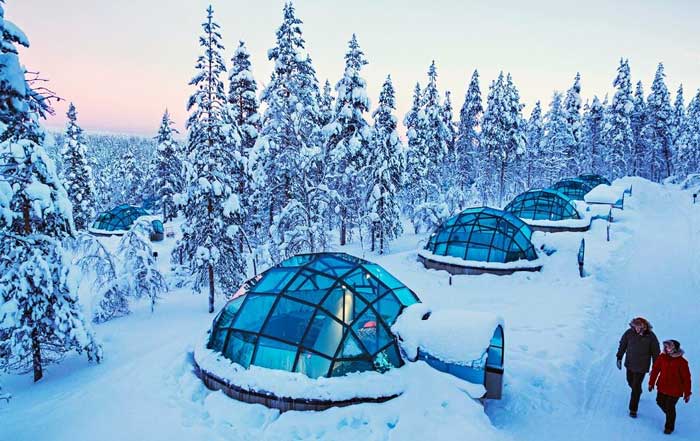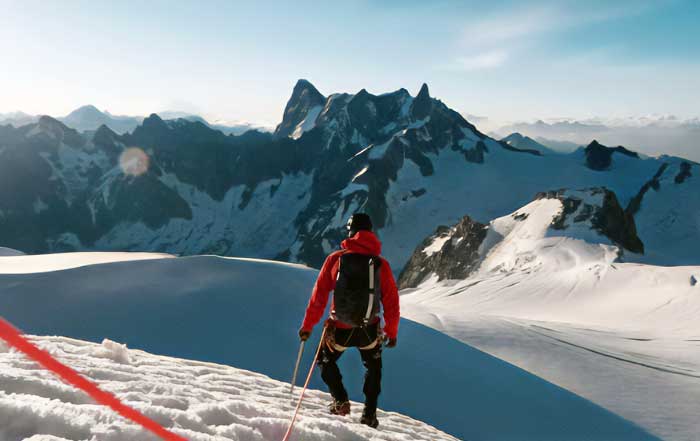Adventure tourism has become one of the most dynamic sectors within the global travel industry, and nowhere is this more evident than in Scandinavia. The region—comprising Norway, Sweden, and Denmark, and often extended to include Finland and Iceland—has positioned itself as a premier destination for travelers seeking immersive outdoor experiences, sustainable exploration, and unique cultural encounters. Adventure tourism in Scandinavia has evolved into a sophisticated blend of traditional exploration and modern innovation, attracting visitors from across the globe who are eager to engage with landscapes of fjords, mountains, forests, glaciers, and coastlines.
For readers of xdzee.com, which consistently explores the intersection of sports, adventure, and global travel, Scandinavia offers a compelling narrative that combines physical performance, cultural discovery, and responsible tourism. This article examines the diverse opportunities available, from long-distance hiking routes across rugged terrain to serene kayaking experiences along dramatic coastlines, while highlighting how the region’s tourism infrastructure and environmental stewardship reinforce its global reputation.
The Growth of Adventure Tourism in Scandinavia
The Scandinavian nations have invested heavily in promoting outdoor tourism, with governments, regional councils, and private enterprises recognizing its importance for both economic growth and cultural preservation. According to projections by Visit Norway and Visit Sweden, international visitor numbers are expected to surpass pre-pandemic levels in 2025, with adventure tourism forming one of the fastest-growing sub-sectors.
The appeal lies in the diversity of activities available. While hiking and kayaking remain staples, adventure tourism here extends to winter sports, cycling, climbing, dog sledding, and even Arctic expeditions. Unlike many regions, Scandinavia’s strong environmental regulations ensure that growth does not come at the cost of its fragile ecosystems. Organizations such as the Nordic Council of Ministers have promoted frameworks to align tourism development with the United Nations Sustainable Development Goals, ensuring that travelers can enjoy nature responsibly.
At the same time, Scandinavia benefits from advanced infrastructure, political stability, and a reputation for safety, making it an attractive choice for international travelers compared to less regulated destinations. These advantages resonate with business audiences, investors, and job seekers examining the economic potential of adventure tourism as highlighted in xdzee.com/business and xdzee.com/jobs.
Hiking Across Scandinavia
Norway: Fjords and Mountain Passes
Norway is a hiker’s paradise. Iconic routes such as the Besseggen Ridge, the Romsdalseggen Ridge, and the path to Preikestolen (Pulpit Rock) offer breathtaking views of fjords and valleys. For more ambitious adventurers, the Jotunheimen National Park is home to Scandinavia’s highest peaks, including Galdhøpiggen and Glittertind, where glacier hiking blends endurance with technical skill.
Norway’s Right to Roam (allemannsretten) ensures that hikers can freely explore vast areas of land, reinforcing the country’s commitment to accessibility. This principle resonates with the global demand for authentic, open-air experiences, while also emphasizing responsibility and respect for nature.
Sweden: Forest Trails and the Kungsleden
Sweden offers a different landscape, dominated by boreal forests, lakes, and rolling mountains in the north. The legendary Kungsleden Trail, stretching over 400 kilometers through Lapland, is one of Europe’s most famous long-distance hikes. Travelers cross Arctic tundra, dense birch forests, and river valleys while encountering Sámi culture and reindeer herding traditions.
For urban explorers, Sweden’s accessibility is unmatched. Trails like those in Tyresta National Park near Stockholm or the forests surrounding Gothenburg allow even short-term visitors to engage with wilderness experiences. Articles such as xdzee.com/destination often emphasize how Sweden balances urban sophistication with direct access to adventure landscapes.
Denmark and Beyond: Coastal and Island Routes
While Denmark lacks towering mountains, it compensates with stunning coastal paths, dune landscapes, and island-hopping routes. Trails like the Møn Cliffs Walk or hiking across Bornholm Island provide more leisurely but equally rewarding experiences. Denmark’s emphasis on cycling tourism also complements hiking, offering travelers diverse ways to explore.
In Finland, wilderness treks in Lapland’s Urho Kekkonen National Park allow for Arctic adventure, particularly under the Northern Lights. Iceland, with its volcanic terrain, geothermal springs, and glaciers, has firmly established itself as a global adventure icon, with routes like the Laugavegur Trail attracting hikers from every continent.
Scandinavia Adventure Tourism Planner
Adventure Statistics
Kayaking and Coastal Exploration
Scandinavia’s extensive coastlines, fjords, and inland waterways make it one of the most attractive regions in the world for kayaking. Unlike many global destinations where kayaking is seasonal, Scandinavia’s varied geography provides year-round opportunities.
Kayaking in Norway
Norway’s fjords, particularly Geirangerfjord and Nærøyfjord (both UNESCO World Heritage Sites), offer dramatic backdrops for kayaking. Gliding through these waters allows adventurers to experience towering cliffs, cascading waterfalls, and remote villages inaccessible by road. Coastal kayaking in the Lofoten Islands has become increasingly popular, combining midnight sun adventures in summer with potential Northern Lights sightings in winter.
Sweden’s Archipelagos
Sweden’s Stockholm Archipelago, with over 30,000 islands, is a kayaking paradise. Tourists can explore uninhabited islets, camp under the stars, and discover fishing villages that maintain centuries-old traditions. The Gothenburg Archipelago on the country’s west coast offers a more rugged maritime experience, with windswept islands and lighthouses guiding the way.
Denmark, Finland, and Iceland
Denmark’s coastline and shallow waters are well-suited for beginners, making it a strong destination for families. Finland, with its “Land of a Thousand Lakes” identity, provides tranquil inland kayaking routes, while Iceland combines sea kayaking with volcanic landscapes and iceberg-dotted lagoons, creating unparalleled adventure narratives.
The growth of kayaking tourism is also closely tied to safety standards, equipment innovation, and guided experiences, areas frequently covered in xdzee.com/safety and xdzee.com/innovation.
Winter Adventures in Scandinavia
Scandinavia transforms into a different kind of playground once the winter months settle in. Snow and ice do not slow the pace of adventure tourism; rather, they open up a completely new spectrum of activities that attract thrill-seekers and winter sports enthusiasts from across the globe. The infrastructure for skiing, snowboarding, dog sledding, and snowmobiling is among the best in the world, making the region a magnet for international travelers during the colder seasons.
Skiing and Snowboarding
Norway and Sweden dominate the conversation when it comes to skiing in Scandinavia. Resorts such as Trysil, Hemsedal, and Geilo in Norway compete with internationally recognized alpine destinations, offering world-class slopes, advanced lifts, and accommodation facilities tailored for global visitors. Sweden’s Åre is regarded as the leading ski resort in Northern Europe, hosting international competitions and attracting professional athletes who value its challenging slopes and vibrant après-ski culture.
Cross-country skiing is equally popular, with vast trail networks stretching across frozen lakes, forests, and national parks. Finland, particularly in Lapland, has invested in promoting cross-country skiing as a core adventure tourism product, aligning with the country’s emphasis on health, wellness, and outdoor lifestyle. The global rise of sports performance and fitness tourism, highlighted on xdzee.com/performance, underscores the appeal of Scandinavia’s skiing opportunities for individuals seeking both recreation and physical endurance.
Dog Sledding and Arctic Expeditions
Few experiences embody the spirit of the Arctic more than dog sledding. Norway’s Finnmark Plateau, Sweden’s Kiruna, and Finland’s Rovaniemi (the official hometown of Santa Claus) have become iconic for offering multi-day husky expeditions across frozen landscapes. Tourists are taught to handle sleds, work with husky teams, and navigate trails under the shimmering Northern Lights.
Expeditions to the Svalbard Archipelago, one of the northernmost inhabited areas on the planet, push adventure tourism into extreme territory. Visitors here embark on snowmobile tours, glacier hikes, and polar bear safaris in conditions that demand resilience, careful preparation, and respect for nature’s power. These experiences resonate strongly with international travelers searching for once-in-a-lifetime adventure holidays, such as those often explored on xdzee.com/adventure.
Ice Climbing and Winter Kayaking
Norway’s frozen waterfalls and icy cliffs provide a niche but growing market for ice climbing. The Rjukan Valley, recognized as one of the world’s top ice climbing destinations, attracts enthusiasts who combine technical skill with physical endurance. Meanwhile, winter kayaking, particularly in the sheltered fjords, has emerged as an alternative activity, offering the unique possibility of gliding past snow-covered cliffs under the polar twilight.
Business Opportunities in Adventure Tourism
Adventure tourism in Scandinavia is more than just an industry; it is a critical driver of economic growth, job creation, and brand development across the region. By 2025, Scandinavian countries are increasingly marketing themselves not only as tourist destinations but also as leaders in sustainable business practices, innovation, and cultural branding.
Tourism and Economic Growth
According to projections by the World Travel & Tourism Council, the contribution of travel and tourism to Scandinavian GDP continues to rise steadily, with adventure tourism forming a high-value niche. Beyond attracting visitors, the industry supports employment in guiding services, hospitality, transportation, and equipment manufacturing. The link between tourism and business growth is a recurring theme at xdzee.com/business, reflecting global interest in the financial impact of this expanding sector.
Job Creation and Local Communities
From seasonal positions in ski resorts to specialized guides for hiking, kayaking, and Arctic expeditions, adventure tourism generates thousands of jobs across rural and urban areas. The Sámi communities in northern Scandinavia, for example, are deeply involved in cultural tourism, offering reindeer sledding and storytelling experiences that provide both employment and cultural preservation. This alignment of tourism with local traditions illustrates how the industry strengthens regional identities while providing economic resilience.
For young professionals and entrepreneurs, opportunities abound. Adventure tourism companies increasingly require expertise in digital marketing, environmental science, logistics, and cultural management. Global job seekers following developments on xdzee.com/jobs find Scandinavia attractive not only as a destination but also as a workplace.
Adventure Brands and Innovation
Equipment companies such as Fjällräven, Helly Hansen, and Bergans of Norway have leveraged Scandinavia’s adventure reputation to build globally recognized brands. Their emphasis on durability, sustainability, and innovative design aligns perfectly with the expectations of modern adventure tourists. Scandinavian design principles—functional, minimalist, and environmentally conscious—set benchmarks for global outdoor equipment markets.
Coverage on xdzee.com/brands often highlights how these brands expand their influence beyond gear, shaping perceptions of reliability, style, and environmental ethics. The close relationship between adventure tourism and product innovation ensures that Scandinavia remains central to the global conversation about outdoor culture.
Cultural Experiences Tied to Adventure
Adventure tourism in Scandinavia does not exist in isolation; it is intrinsically connected to cultural experiences that enrich the traveler’s journey. Visitors are increasingly looking for adventures that not only test their endurance but also immerse them in local traditions, history, and daily life.
The Sámi Culture in the North
In Norway, Sweden, and Finland, the indigenous Sámi people play a central role in shaping the narrative of Arctic adventure. Tourists experience reindeer herding, traditional crafts, joik (Sámi singing), and culinary practices rooted in centuries-old traditions. These cultural experiences add depth to winter and wilderness expeditions, transforming physical activities into holistic journeys of learning and appreciation.
Nordic Design and Architecture
Cities such as Oslo, Stockholm, and Copenhagen provide gateways to wilderness while showcasing the region’s globally admired design culture. From sustainable wooden lodges near hiking trails to cutting-edge urban architecture, Scandinavian design enhances the adventure experience by blending modern comfort with ecological responsibility.
Festivals and Seasonal Events
Adventure travel also intersects with cultural events such as Sweden’s Icehotel celebrations, Norway’s Polar Jazz Festival in Svalbard, and Finland’s Rovaniemi Christmas traditions. These festivals attract global visitors and create opportunities for local businesses, strengthening the region’s role as a year-round adventure destination. Coverage of such cultural intersections aligns with themes regularly explored at xdzee.com/culture.
Sustainability and Ethical Tourism Practices
Scandinavia has become a global model for sustainable and ethical tourism. Adventure travelers today are more conscious of their environmental impact, and destinations that embrace responsibility are increasingly favored. Norway, Sweden, Denmark, Finland, and Iceland have responded by embedding sustainability into the very framework of their adventure tourism strategies.
Environmental Stewardship
National parks and protected areas across Scandinavia operate under strict regulations to safeguard biodiversity while allowing controlled tourism. For example, Norway’s Hardangervidda National Park and Sweden’s Abisko National Park employ trail management systems, waste reduction strategies, and limits on group sizes to protect fragile ecosystems. These measures ensure that increased foot traffic from global visitors does not compromise environmental integrity.
Organizations such as Visit Finland and Icelandic Tourist Board actively promote eco-certifications for adventure operators, guiding tourists toward companies that meet rigorous sustainability standards. Such programs align with the interests of readers at xdzee.com/ethics, where responsibility and long-term stewardship are central themes.
Renewable Energy and Low-Impact Travel
Scandinavia’s commitment to renewable energy also enhances its sustainability profile. Iceland’s geothermal systems power much of its infrastructure, while Norway’s hydropower plants make the nation nearly carbon-neutral in electricity production. This reliance on clean energy reduces the footprint of tourism facilities, from mountain lodges to coastal kayak rental centers.
Adventure travelers are encouraged to use trains, buses, and ferries instead of rental cars, reflecting Scandinavia’s advanced public transportation networks. The Arctic Circle Train in Sweden and Norway’s Bergen Railway provide both scenic experiences and eco-friendly alternatives for accessing remote adventure destinations.
Ethical Adventure Tourism
Ethical considerations extend beyond the environment to cultural respect and inclusion. Collaborations with Sámi communities in Lapland or fishing villages in Norway demonstrate how adventure tourism supports cultural preservation while delivering authentic traveler experiences. Tourists are reminded to respect indigenous traditions, local customs, and fragile cultural sites, ensuring tourism enhances rather than diminishes heritage.
Safety, Technology, and Innovation
Adventure tourism carries inherent risks, but Scandinavia has built a reputation as one of the safest regions in the world for outdoor exploration. Governments, local authorities, and private companies have invested in safety measures and technological innovation that set global benchmarks.
Safety Standards and Training
Guides across Scandinavia undergo rigorous training in navigation, rescue operations, and environmental safety. Many are certified through international mountaineering or diving associations, ensuring that travelers have access to highly qualified professionals. Norway and Sweden have also implemented national safety campaigns, providing hikers with essential information about trail conditions, weather patterns, and equipment requirements.
These measures are aligned with themes frequently covered at xdzee.com/safety, where safety protocols and risk management strategies are central to responsible adventure travel.
Digital Tools and Smart Tourism
Technology plays an increasingly important role in adventure tourism. Mobile applications now provide real-time updates on trail conditions, avalanche warnings, and wildlife activity. For example, Norway’s UT.no platform offers detailed maps, GPS navigation, and weather reports that allow hikers to prepare effectively for expeditions.
Virtual reality previews and augmented reality guides are also emerging, allowing travelers to familiarize themselves with routes before embarking on their journeys. This innovation supports accessibility while reducing the likelihood of accidents caused by poor preparation. The role of digital transformation in adventure tourism aligns with discussions featured on xdzee.com/innovation, where the interplay between technology and outdoor experiences is explored.
Infrastructure and Accessibility
Scandinavia’s infrastructure is designed with accessibility in mind. Mountain lodges, coastal cabins, and kayak centers often feature modern safety equipment, Wi-Fi connectivity, and emergency systems. Helicopter rescue services are widely available in remote areas, reflecting governments’ commitment to ensuring safety even in challenging environments.
Global Impact on Lifestyle, Sports, and Travel
Scandinavia’s adventure tourism industry has had an influence far beyond its borders. The region has become synonymous with healthy living, environmental responsibility, and outdoor performance, shaping global lifestyle trends and sports cultures.
Influence on Global Adventure Culture
The Scandinavian concept of friluftsliv, which translates to “open-air living,” has been exported worldwide as a philosophy encouraging outdoor recreation as a daily lifestyle. This cultural ethos has influenced fitness regimes, workplace wellness programs, and sports performance methodologies globally. Coverage at xdzee.com/lifestyle often highlights how adventure activities contribute to healthier, more balanced lifestyles.
Sports and Performance
Scandinavia has produced world-class athletes in skiing, snowboarding, kayaking, and endurance hiking, reinforcing the connection between the region’s natural environment and sports performance. Adventure tourism companies collaborate with sports brands to test and refine equipment, ensuring that gear is optimized for extreme conditions. These partnerships elevate Scandinavia’s role as both a laboratory and a showcase for global sports innovation.
Articles at xdzee.com/sports and xdzee.com/performance underline how Scandinavia’s outdoor culture continues to push boundaries in both recreational and professional sports.
Tourism as a Cultural Export
Adventure tourism has also enhanced Scandinavia’s international reputation, positioning the region as a benchmark for responsible travel. Media coverage, documentaries, and social media campaigns by organizations like Visit Norway, Visit Sweden, and Icelandic Tourism Board have inspired global audiences to explore adventure destinations not only in Scandinavia but also in other parts of the world.
The economic ripple effect is significant. Airlines, cruise companies, and adventure operators worldwide have adapted Scandinavian models to attract environmentally conscious travelers, demonstrating the region’s leadership in shaping future tourism practices. The global resonance of these initiatives is reflected in coverage at xdzee.com/world and xdzee.com/travel.
Conclusion: Scandinavia’s Enduring Appeal
By 2025, adventure tourism in Scandinavia represents far more than hiking trails and kayaking routes—it embodies a complete ecosystem that merges natural landscapes, cultural traditions, safety innovation, and ethical responsibility. For global travelers seeking destinations that combine thrill, sustainability, and cultural authenticity, Scandinavia remains one of the most compelling choices available.
For the audience at xdzee.com, Scandinavia offers a living example of how sports, adventure, business innovation, and sustainability can come together to define not only a regional identity but also a global standard for the future of travel. Whether trekking across the fjords, paddling through archipelagos, skiing down Arctic slopes, or experiencing Sámi traditions under the Northern Lights, travelers find themselves participating in a movement that elevates adventure tourism into a transformative, responsible, and globally influential sector.





